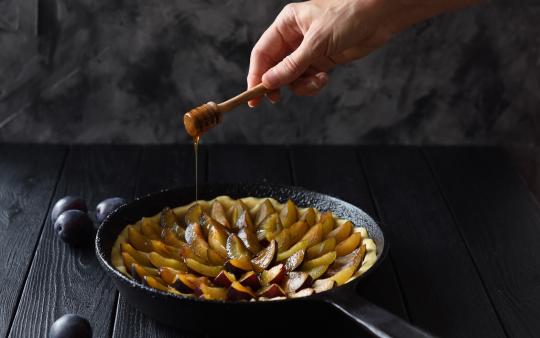Like many moms, I am always seeking balance. When it comes to cookware, I try to balance health and safety, impact on the planet, and the overall ease of making a meal. Choosing greener cookware is more than simply avoiding Teflon pans: it’s a choice about avoiding toxins and reducing your footprint while still getting your hands on reliable and usable products. In a market inundated by so many options, not all of them high quality, how do you choose the right cookware for the job that’s also long-lasting, durable, and easier on the planet?
A note on greenwashing: While terms like “natural”, “eco-friendly”, “sustainable”, “recyclable”, “biodegradable”, and “nontoxic” may appear to signal an environmentally safe product, these words don’t actually mean much. They are intentionally vague descriptions that many brands use to capitalize on the growing demand for more ecologically conscious goods. Known as greenwashing, this marketing tactic uses various techniques to mislead consumers into thinking that a product is more environmentally friendly than it is, rather than investing those advertising funds into making products that match their claims.
To confuse matters more, while many types of cookware are lauded as "the sustainable choice" based on materials used and longevity, the mining and production of these materials may in fact harmful to the environment, although the precise impact is difficult to measure as a whole and can vary significantly from brand to brand. Nonstick cookware and bamboo kitchen utensils are often the most prone to greenwashing, so it’s crucial to be aware of actual sourcing and manufacturing techniques that may well be associated with the very toxins or unethical practices you’re avoiding.
Cookware Uncovered: Nine Materials to Know
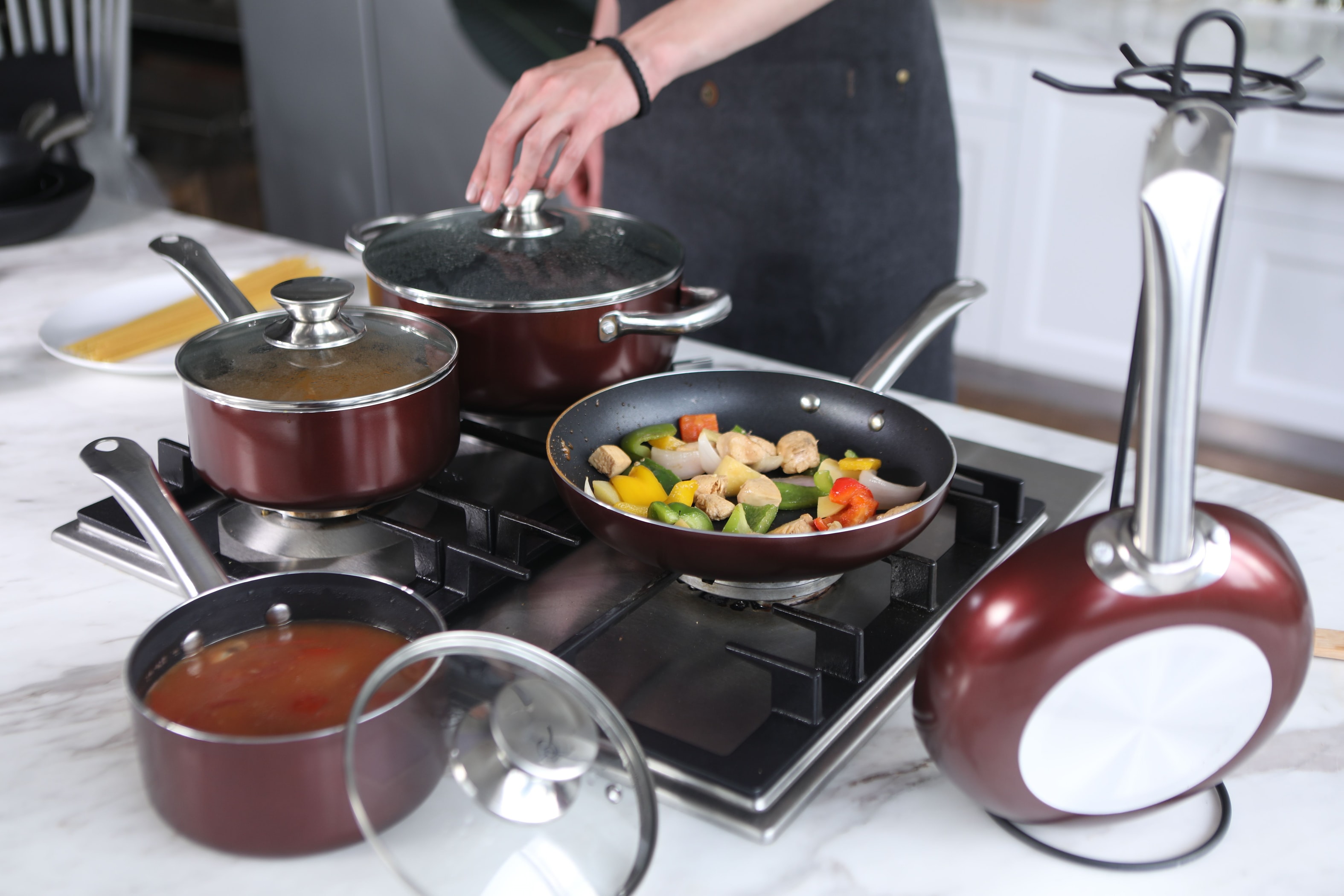
Nonstick
Teflon is the patented name for the nonstick chemical also known as polytetrafluoroethylene (PTFE), and most of us at one time or another have been the proud owner of a slick-surfaced Teflon pan. Not limited to pan coating, this chemical is also used in everything from carpets to industrial applications.
PFAS commonly refer to a group called per- and polyfluoroalkyl substances, which includes perfluorooctanoic acid (PFOA, also known as C8), a chemical used in the process of making PTFE. While claims have been made that most of it is burned off during the manufacturing process, exposure to PFOA may have serious health consequences.
The American Cancer Society notes that PFOA remains long-term in the body and environment and that exposure is often ongoing. The consequences of long-term exposure are still being studied but there have been noted correlations with testicular, kidney, and thyroid cancers and possible associations including prostate, bladder, and ovarian cancers. In addition, PFOAs have been linked to thyroid hormone disruption, while the chemicals as a group have been connected to low birth weight and immune dysfunction. It should be noted that the greatest risks of this chemical have been linked to manufacturing contamination of the environment in ways such as in drinking water rather than at the scale of periodic cooking, but many researchers feel the risk factor is still too high.
By 2015, the Environmental Protection Agency had significantly limited the manufacturing of PFOAS, but cautioned that “existing stocks of PFOA might still be used and there might be PFOA in some imported articles.”1 For more on the hazards of Teflon (and the alternatives!), click here.
Bottom line: Avoid Teflon and PFOAs.
Nonstick Ceramic
Most newer nonstick ceramic cookware can go safely from stovetop to oven, and requires less oil to cook with. High-conducting metal, typically aluminum or stainless steel, is covered by a nonstick coating made from chemically altered sand or stone. Thermolon, a patented non-stick coating used by multiple brands, is third-party certified as free from PTFE, PFOA, PFAS, lead, and cadmium.
Aluminum is safe from reacting dangerously to acids as the lightweight metal is coated, or anodized. In terms of sustainability, it rates well as a material that is both highly recyclable and also which producers have taken significant efforts to reduce energy used in manufacturing. However, it is notoriously difficult to recycle mixed material products.
Bottom line: If you need a nonstick pan to cook delicate foods, ceramic nonstick is your best option.
Versatile Ceramics
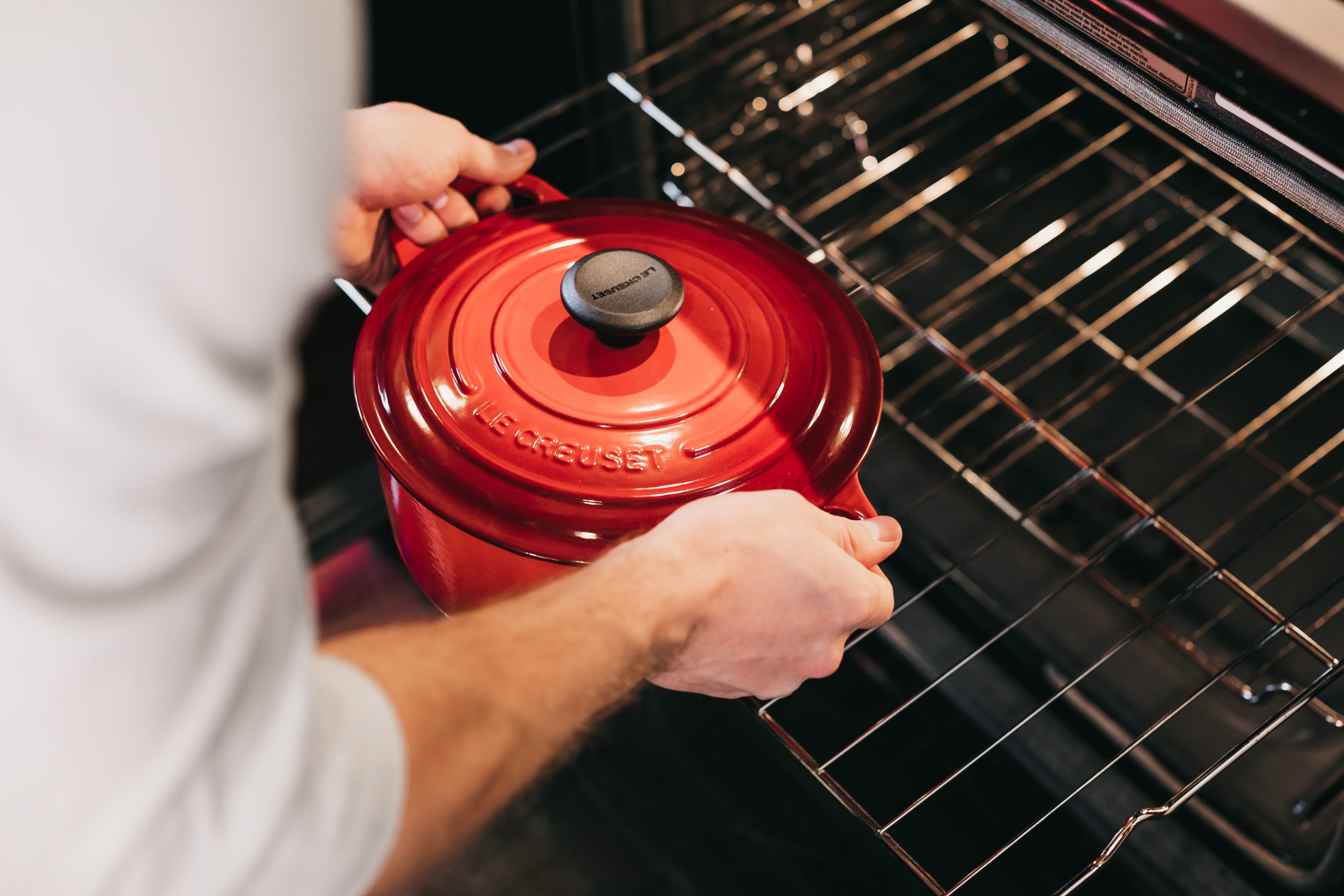
You’ve probably seen ceramic items on many wedding registries, as they’re typically deemed to be expensive non-essentials that look gorgeous sitting proudly on tabletops. Ceramic typically refers to hardened, nonmetal materials, and can be commonly found in kitchens as earthenware, stoneware, and porcelain, with stoneware being the most versatile and useful for everyday cookware.
Stoneware is fired at higher temperatures than other types of ceramics and does not require a glaze to be water-resistant. But when glazed, stoneware is about as close as it gets to nonstick (at least in this author’s opinion). The bakeware is great for the oven, and most can also go in the microwave or dishwasher for extra convenience. Stoneware should not be used directly on a stovetop or exposed to extreme temperature shifts.
Ceramic cookware is made from kiln-hardened natural clay. Any toxic materials from the soil are removed in the process as heavy metals like lead, cadmium, and arsenic vapourize below 1500°F, and a ceramic kiln is heated somewhere between 1800°F and 2400°F. Do be cautious with older stoneware, however, as toxic dyes may have been used in many of these glazes.
In terms of sourcing, ceramic clay may be the most plentiful and least harmful material in this guide, and requires minimal processing before going to market. Further, ceramics can be recycled into other products—although consumers won’t have an easy time finding a specific ceramic recycler.
Bottom Line: Ceramic cookware works well and can be made from minimal materials, but its price point may place some items out of reach, and its fragility can be intimidating for many families with small children.
Sturdy Cast Iron
Cast iron pots and pans are time-tested kitchen stalwarts. If kept and managed well, they can be passed down through generations, developing a nonstick-style patina from fastidious seasoning and use. While virtually indestructible, cast iron does have an Achilles’ heel: moisture. Rust is the bane of most cast iron owners’ existence, making it a little more finicky than most cookware. Cast iron cookware can’t be tossed in the dishwasher, left to soak for prolonged periods in the sink, or piled together in a place where humidity can take hold. It’s also heavy, doesn’t work well with certain foods, and can result in discoloured meals.
However, cast iron gets high sustainability points for its lengthy lifetime: just ask anyone who’s been handed down a vintage cast iron pot, or has picked up and lovingly restored a junk store cast off! It’s also recyclable. As an added bonus, cast iron pans can actually add iron into your food! How much iron, and how well it’s absorbed, can depend on several factors, so if you are severely deficient in this mineral consult with a medical professional for additional supplementation. For best results, search for cast iron products manufactured in Canada or the United States.
Bottom line: Cast iron provides the longest-lasting cookware and offers the best return on investment in sustainability and versatility.
Recyclable Steel

Steel has long been used for cookware, but the exact benefits and disadvantages are based on the specific alloy used. The most common mixtures are shiny-looking stainless steel and darker carbon steel.
Stainless steel is a mix of iron with a high chromium content which creates shine, combats rust, and is lighter than cast iron. Like cast iron, stainless steel doesn’t react well to acidic foods, and can cause component minerals to leach into food.
Carbon steel has a heavier carbon mixture than stainless steel and is known for its lightweight feel. Like cast iron, carbon steel requires some maintenance, as cookware can’t be left to soak and must be seasoned. Chefs love its ability to create a nonstick patina, and its even-heat distribution.
With proper care, both stainless and carbon steel products can last many years. Steel alloys are usually highly recyclable, with stainless steel being 100 percent recyclable, and both stainless and carbon steels are regularly recycled and reused.
Bottom Line: Stainless steel is affordable, long lasting, and recyclable. Carbon steel is fantastic for even heat distribution, and a stellar material for woks.
Eco-Friendly Copper
Copper is pricey and gorgeous, doubling as as high-quality cookware and a statement piece for any kitchen. Valued for its heat conductivity and even heat distribution, copper is more often available in cookware when mixed with other metals, either as a core or bottom for aluminum or stainless steel pans (and to a lesser extent coated in tin or ceramics). The stainless steel combination is thought to make the most of copper’s natural heating conductivity while minimizing the negative aspects: namely, discolouration and leaching into foods.
The concern that copper from cookware may leach into foods, potentially affecting the liver, kidneys, and even fetal development, has not been robustly validated and the exact mechanism and need for concern is unclear. Research indicates that our bodies are highly efficient at preventing overexposure to copper, and copper is not listed by the EPA as a known human carcinogen. Keep in mind, however, that there are known health risks associated with metals such as nickel and aluminum, both of which may be used in copper-hybrid cookware.
Copper ranks as the third least harmful material, behind cast iron and stainless steel, and is highly recyclable. Recycling may be hindered, however, depending on hybrid metal composition. If choosing copper or copper hybrids, look for those manufactured in North America.
Bottom line: Copper is a fantastic tool for chefs, though pricey. Use copper for its heat-conducting advantage and look for stainless pots and pans with a copper core.
Energy-Efficient Glass
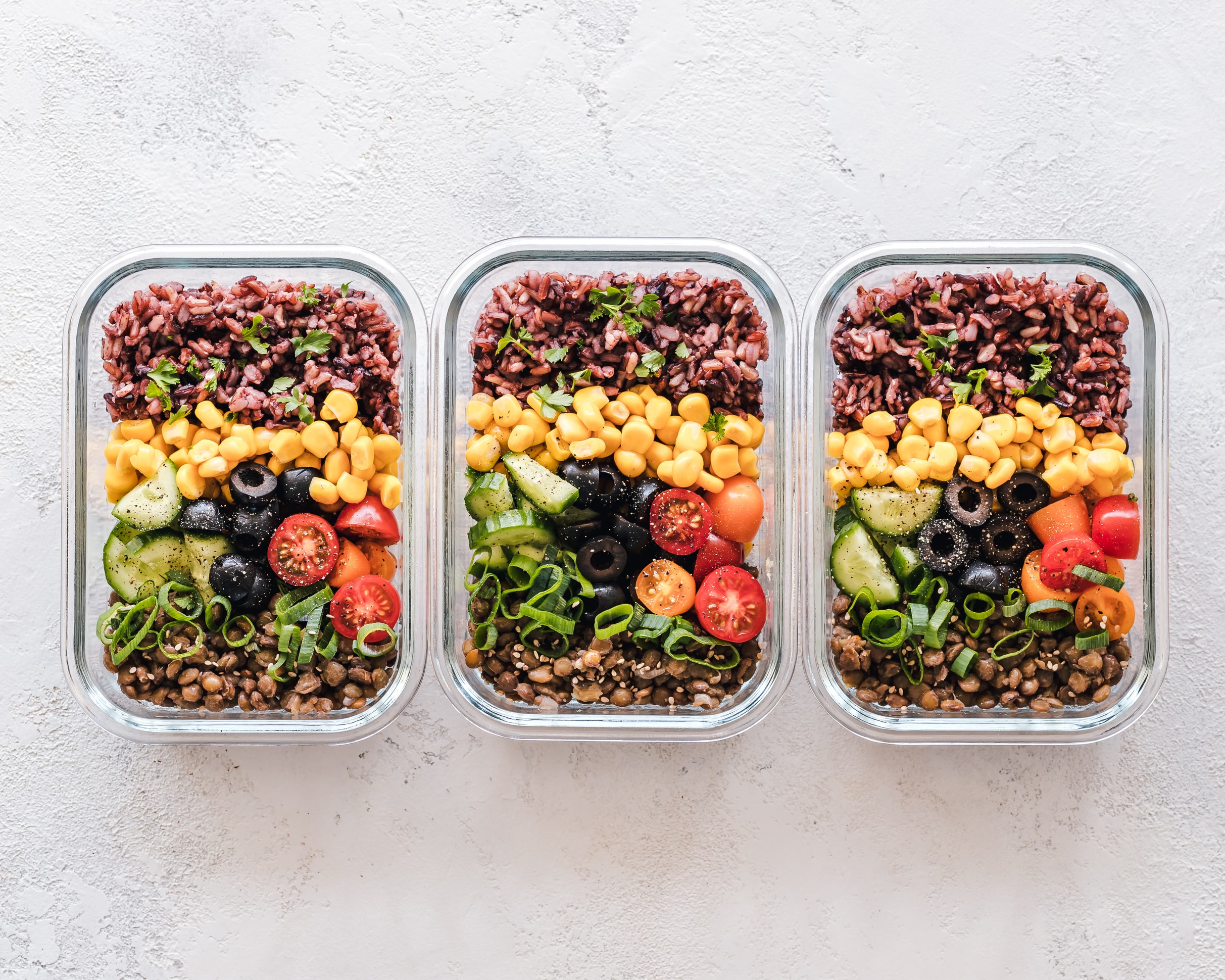
Glass can be used for both cooking and storage, and is generally durable, easy-to clean, and practical. It helps to cook foods faster, which means reduced energy consumption. On the downside, glass cooks unevenly and may crack under quick temperature changes (although the development of temperature-resistant glass has mitigated fear of exploding glass dishes).
Because glass is impermeable, it doesn’t absorb foods, flavours, germs, bacteria, mould, or cross-contaminants, making it great for those with food allergies and dietary restrictions. For food storage, glass is preferable to plastic, especially for acidic or fatty foods, which can absorb hormone-disrupting chemicals.
The overall sustainability of glass is higher than many metals because its production relies on naturally occurring sand. The primary environmental concern is atmospheric pollution from manufacturing, although responsible companies are taking steps to curb this too. Interestingly, researchers believe that CO2 savings from glass recycling may be "as large, or larger, than the transportation emissions.”2
Bottom line: Glass is a fantastic and affordable kitchen staple. Search for energy efficient manufacturers.
Sustainable Bamboo
Bamboo’s quick growth (it’s actually a grass!), drought-tolerance, strength, and flexibility make it a great material for the kitchen. It’s affordable, antimicrobial, and its versatility lends itself to everything from spatulas to cutting boards.
While considered quite safe, don’t forget to review the manufacturing processes of bamboo products you bring into your home. It’s important to know how it has been glued together as some adhesives have been discovered to contain formaldehyde.
Due to its extremely high growth rate, bamboo ranks as one of the most renewable materials around, although environmental risks increase if toxic finishes or adhesives are used. Bamboo can come from a variety of sources, and may grow in North America, but is more frequent in subtropical climates. Look for bamboo products created through non-toxic manufacturing techniques.
Bottom line: Bamboo is great; toxic glues are not.
Natural Wood
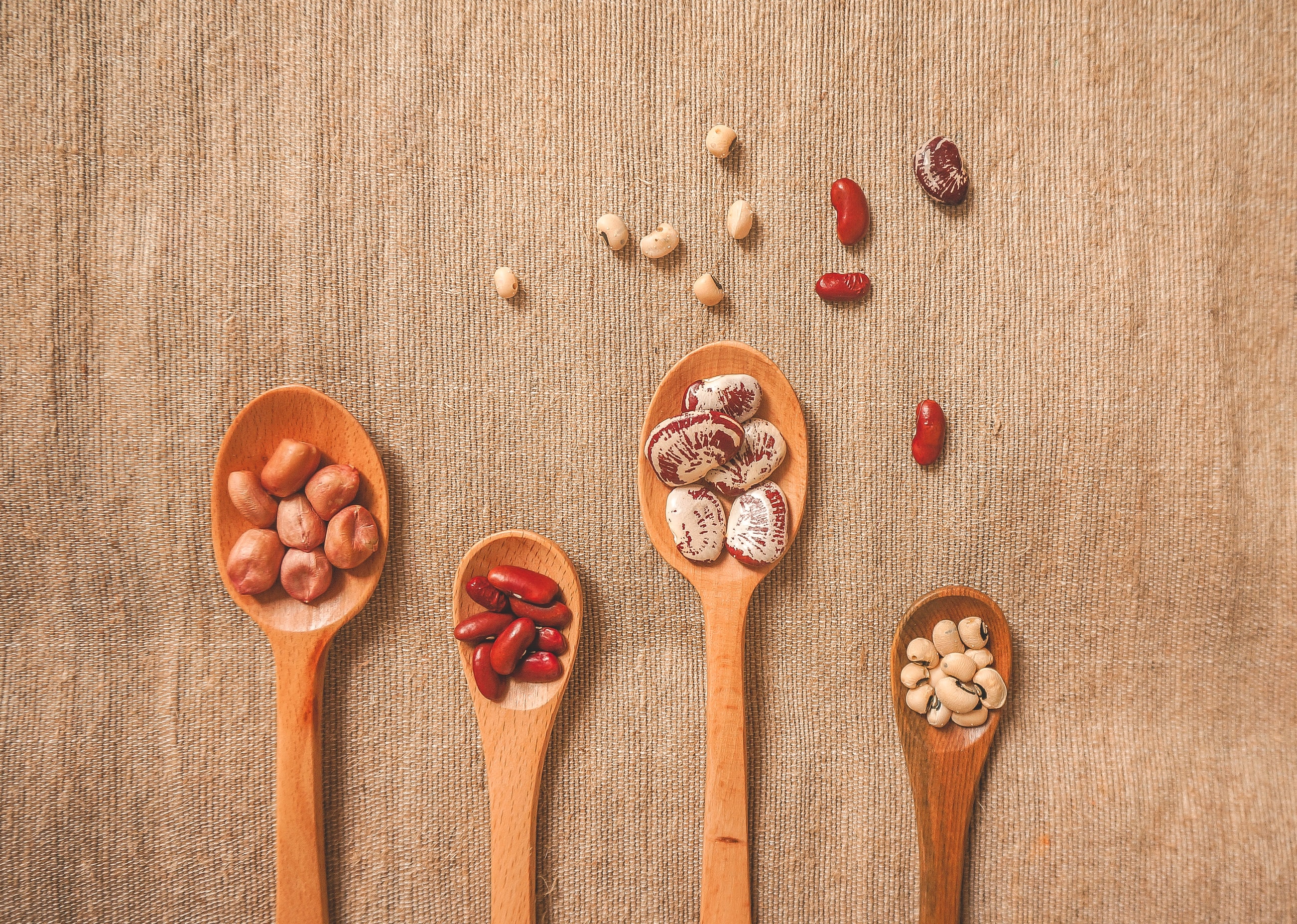
Like bamboo, wooden utensils are lightweight and less abrasive on your expensive cookware, and wood is an inert, non-reactive substance. Wood is also naturally biodegradable and can be sourced from artisans and crafters in your area, which is a great way to support local business. While wood is considered quite safe, make sure to only purchase items treated with food-grade oils such as walnut, coconut, and linseed oil, or beeswax or carnauba wax. Hardwoods like maple, walnut, oak, and cherry have antimicrobial properties. Decomposition of natural wood should have a limited environmental impact, but responsible harvesting of these materials must always be considered. Quality woods like hardwood maple grow naturally in the US and Canada—a carbon footprint win!
Bottom Line: Ethically harvested wood is a safe and sustainable kitchen option.
There is no single factor that will make your cookware both green and safe, as most types will have both benefits and drawbacks. It’s important to arm yourself with a little knowledge, and carefully choose the right tool for the cooking job you need, sourcing the most eco-friendly material from a reputable brand and manufacturer to get the safest and greenest cookware available. Your family, your kitchen, and your weeknight dinner will thank you!
Want to learn more? Check out more EcoParent, including An Eco-Friendly Kitchen for Everyone, Green Up Your Kitchen Essentials, and Creating a Child-Friendly Kitchen.



